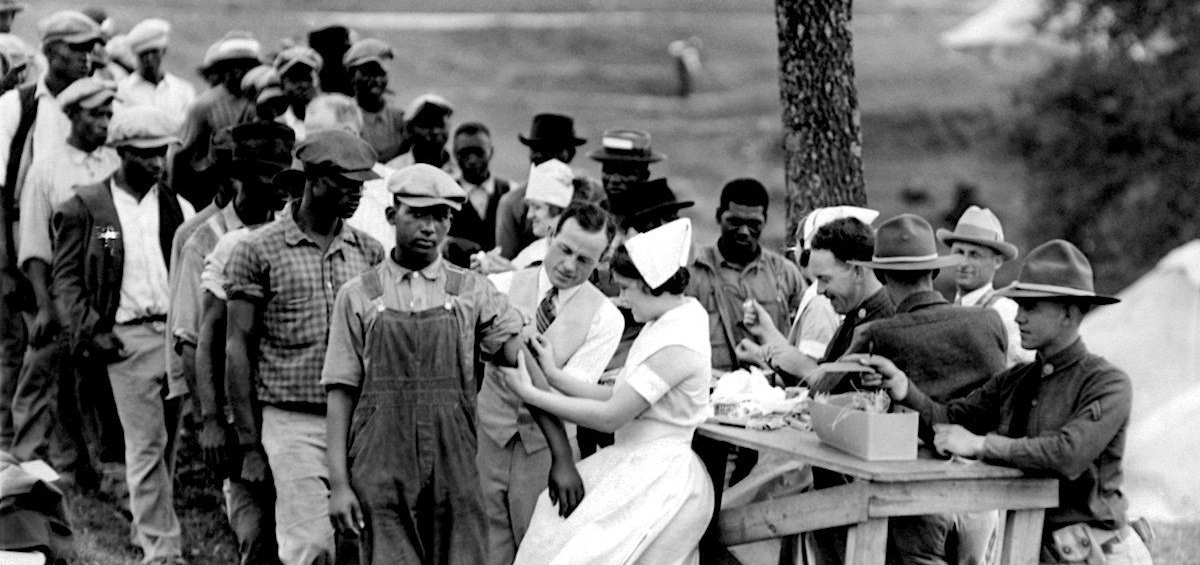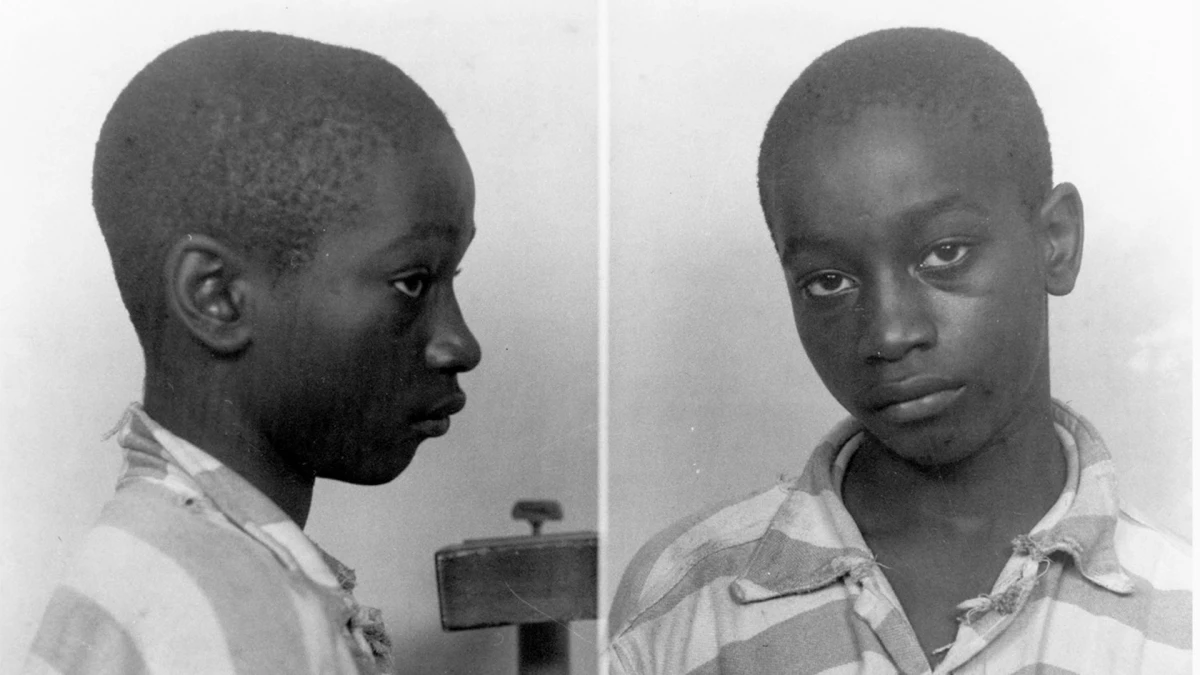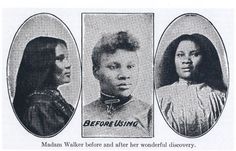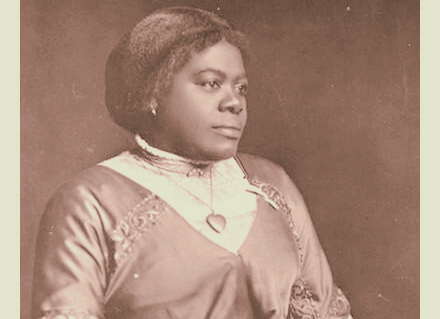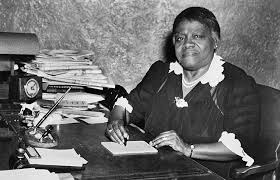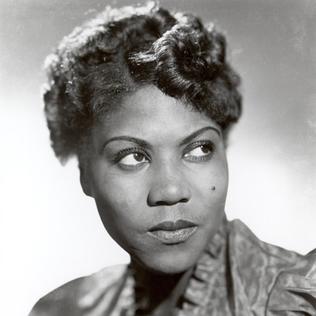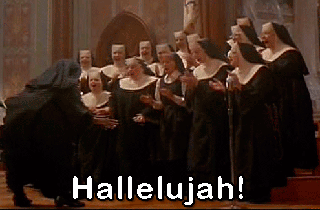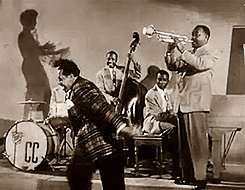The Tuskegee Institution was founded in 1881, based in the Alabama it was a part of an effort to expand education for the black community in places that had previously been confederate run. In 1906, the institutions Principal, Booker T Washington, celebrated the schools 25th anniversary; praising the institute as a place where students could ‘engage with education and upbuilding of their race.’ Going on to say that the school’s upmost goal would always be,
‘to do something that would reach and improve the situation of the negro population in the south.’
This was the foundation that Tuskegee Institution was built on and yet, less than thirty years later, a team of scientists and doctors at Tuskegee would do the exact opposite. Working with the US government on an experiment that betrayed the very community they were built to serve and in doing so, they committed one of the most heinous acts in American medical history.
But before we get to what went down at Tuskegee in 1932, it’s important to know why it happened in the first place. So, lets quickly chat everyone’s favourite topics – syphilis and its impact on racist medical ideals! (don’t say I don’t spoil you)
A brief breakdown of syphilis
Syphilis is one of those STI’s that seems to have always been a thing. Seriously, it’s been knocking about for centuries, actually getting the name ‘syphilis’ thanks to a 1530 poem by Girolamo Fracastoro, in which a shepherd called Syphilus gets the STI (then called ‘The French Disease’ though the French called it ‘The Italian Disease’ because xenophobia knows no bounds) that’s right syphilis was such a big deal that people wrote poetry about it!

Although its presence remains a constant throughout history, throughout the ages we see waves of syphilis outbreaks, one of these waves happened in America, where by the 1930’s it was estimated that at least 1 in 10 people suffered from syphilis. This is obviously very bad, but it’s worse when you factor in that if left untreated, syphilis has some pretty gnarly side effects, including blindness, paralysis, organ failure and something called Neurosyphilis.
Now Neurosyphilis normally develops after many years and it impacts the bodies nervous system, in particular the brain and spinal chord. There are different types of neurosyphilis (don’t worry I won’t go into all of them now!), but one of the major signs of neurosyphilis in a patient is psychiatric problems, such as depression, psychosis, dementia and mania. It’s now estimated that in the 1930’s roughly 20% of America’s asylum inmates were suffering from neurosyphilis. This was a very big problem and so of course, doctors wanted to know more about it.
Cut back to Tuskegee in 1932. The US Government were keen to look at how neurosyphilis impacted the brains of black men. Their hypothesis was that although black men were more likely to have syphillis, they were less likely to get neurosyphilis than white men.
That is quite the racist sentiment to take in, so let’s break it down. On the ‘more likely to have syphilis’ part, this was an idea that had been thrown around since the 1800’s. With many medical professionals taking the approach that black people were genetically inferior to white people and therefore were more likely to succumb to disease. Now this was backed up by figures…but that was actually because a black patient was less likely to receive an early diagnosis, get good treatment or have a quality of life that meant they were physically fit enough to fight off a horrifying disease. This was something a handful of reformers pointed out; however, massive racial prejudice was very much the order of the day – so, screw clear social economic factors. This was Darwinism and yet another sign black people were inferior to whites.
But why did they think black men were less likely to have neurosyphilis? Well this is summed up best in 1911 by one Dr E.M Hummell, who suggested that white patients got neurosyphilis as their brains were more developed, but a black person’s brain was less developed, thanks to their ‘childlike euphoria of a carefree life’ which was because:
‘(they) have not progressed very far from the primitive habits of their antecedents in the rude huts of a mid-african village’
Obviously not everyone was just going along with this argument. In 1929 a group of mostly black physicians at Tuskegee Institution (yes that same Tuskegee Institution), underwent a study on black patients with syphilis, and released a series of papers with their findings in the Journal of the Medical Association.

However, they chose to omit any mention of a hierarchal race system being a contributing factor. Something that was incredibly admirable (not to mention factually correct), but meant that predominately white physicians could say ‘Gee whizz! This is very interesting…but of course, being black still means you’re more likely to get syphilis but less likely to get neurosyphilis.’
Which was further cemented just a year later by a 1930 paper by one Dr Thomas B. Turner, which used data from 10,000 patients to claim that there was ‘sufficient proof of a profound biological difference in the races and sexes’ And of course, that black men were less likely to get neurosyphilis, because of the now beloved adage, that their brains were not as developed thanks to:
‘the lazy carefree life of a negro in contrast to the strain of civilisation.’
The experiment
And so, with all this in mind in 1932 the US Public Health Service (PHS) launched a study into latent syphilis and neurosyphilis in black men. Where did they go for this study? Tuskegee Institution of course! Not only did the school have a history of studying syphilis, but Macon Country, where the school was based, was seeing a rise of syphilis, making it as senior PHS officer, Dr. Taliaferro Clark, put it ‘an unusual opportunity’.
The plan was this – to study 400 men with syphilis (along with a control group of 200 men who didn’t have syphilis) and just see what happened if they weren’t treated.
The Surgeon General, Hush S Cummings, sold it to Tuskegee Institution by saying, ‘The presence of an unusually high rate in this county and, what is more remarkable, the fact that 99 per cent of this group was entirely without previous treatment. This combination, together with the expected cooperation of your hospital, offers an unparalleled opportunity for carrying on this piece of scientific research which probably cannot be duplicated anywhere else in the world.’ This was an amazing once in a lifetime opportunity to study the effects of syphilis! So of course, Tuskegee Institution jumped on board.
But you may have noticed a small issue here. Remember the bit about just seeing how syphilis impacted the lives of 400 men if left untreated? Well, that goes against everything every medical textbook at the time (and now!) says you should do. If someone has syphilis, you need to treat it. Not leave it for an unspecified amount of time and just see how things plays out.
However the PHS weren’t stressed about this. You see they figured two things:
1. Much of the local community who had syphillis already weren’t being treated, so was it really that ethically bad of them to not treat these men as well?
2. Once a subject was diagnosed with syphilis, they just wouldn’t tell them they had syphilis! After all, they couldn’t ask for treatment for a disease they didn’t know they had.
And so with that monstrosity of a plan in place, the team set to work getting subjects. Things didn’t get off to a good start. Before being admitted onto the programme, potential subjects had to undergo a physical and spinal tap to check that they had syphilis and the signs of neurosyphilis. However, the local black community were worried that these mysterious physicals were actually a crafty way of making young black men have a draft physical and forcing them to join the army.
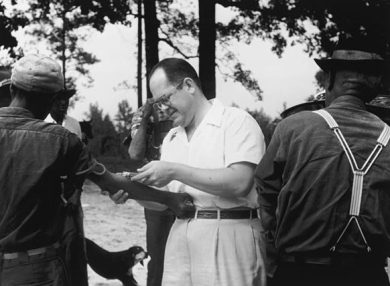
So, the team came up with a new pitch, instead of calling it an experiment or programme, they’d sell it as a way for men who had syphilis to get free health care and treatments. This led to an influx of men who either knew they had syphilis (or bad blood as it was locally called) and couldn’t afford to treat it, or thought they had it but couldn’t afford to be properly diagnosed.
The final hurdle in securing all the participants was the spinal tap to check for neurosyphilis. This was an incredibly painful procedure and the team were worried that once subjects told each other how bad it was, nobody would get it. So, they doubled down on the promise of free treatment, writing to the men:
‘Some time ago you were given a thorough examination and since that time we hope you have gotten a great deal of treatment for bad blood. You will now be given your last chance to get a second examination. This examination is a very special one and after it is finished you will be given a special treatment if it is believed you are in a condition to stand it….
REMEMBER THIS IS YOUR LAST CHANCE FOR SPECIAL FREE TREATMENT. BE SURE TO MEET THE NURSE.’
And yes, they did use all caps on that last bit… And no, they were never actually treating these men with anything but placebos.
As the study went on, things kept getting worse. Obviously, the men who had syphilis weren’t getting treatment, but kept getting sick. Yet that wasn’t the major issue (at least for the team). In 1933 the team behind the experiment got more funding to continue the programme. However, by now they’d decided that they’d need to run the programme indefinitely, or at least until the subjects started to die. Because as one of the leaders of the programme Dr Oliver C Wagner put it:
‘We have no further interest in these patients until they die.’
So then why did the Tuskegee Institution carry on working with the Public Health Service, when they knew the end result would be the death of 400 men?
There is no clear-cut reason, but there are potential contributing factors. One would be that Tuskegee Institution was reliant on donations and beneficiaries – so pissing off the US government was a quick way to stop that income coming in. Another was that Dr Eugene Dibble, the head of the school’s hospital, saw the programme as a good way to showcase Tuskegee Institution as a major player in medical research. Then there’s the argument that the school may not have known just how bad the programme was going to get – that these men would never receive treatment and that just a year in, the PHS would be actively waiting for subjects to die.

Many historians argue that Tuskegee Institution, as well as it’s staff, including the likes of Dr Eugene Dibble and Nurse Eunice Rivers, who worked throughout the programme, were as much victims as the men whose trust the Tuskegee experiment abused. Those at the top of the programme were powerful white men and the repercussions for the Institution and staffers like Dibble and Rivers would have been severe.
In fact Eunice Rivers later claimed she only kept working on the programme so she could provide as much care as she could to the men. She said that each year the programme went on those at the top reminded her ‘you belong to us’. Eunice was adamant that she was a good nurse, who had the Nightingale Pledge hanging in her house, and that she was just doing the best she could to tend to her patients in what was a horrifying situation.

It may be true that Tuskegee staff members like Eunice felt trapped and that they had no choice but to follow orders. But they still didn’t blow the whistle on what was going on. They carried on and we’re very much the face of the study. The men participating weren’t interacting with those at the top. In fact, Eunice admitted that many of the men called it ‘Miss Rivers Study.’
The plan to keep the men on the programme until they could be autopsied went ahead. With the programme’s leadership believing they could gain more from examining the men’s bodies once deceased than they could when they were alive. Which posed the next problem – how did they hide the fact the men were dying and they were planning on autopsying them, from the local black community. It was a tough one, as Dr Oliver Wegner bluntly put it:
‘There is one danger in the latter plan and that is if the coloured population become aware that accepting free hospital care means a post-mortem, every darkey will leave Macon County…’
So, in 1933 the team asked the government to appoint Tuskegee Institution’s, Dr Eugene Dibble, to the PHS. They hoped that seeing a black doctor on the team given a title with such clout would mean the local community would trust them more. They combined this with increasing the work of Eunice Rivers, who now offered car rides to patients on their ‘treatment’ days, gave out hot meals and even told families that in the unlikely case the worst happened, the programme would cover funeral expenses. It was a masterclass in spin; putting a trustworthy face on the programme, all in the hopes the families would sign over their loved ones bodies.
And it worked. The patients and their loved ones trusted the team. For so many years these people had no help, no choice but to take their chances on if the disease would ravage them. Not only was the Tuskegee programme offering a lifeline to its patients, but they were helping thousands more mothers, fathers, wives and children, who’d otherwise have to watch their loved ones suffer. So of course, they signed the forms allowing autopsies. Not only because the programme had helped them so much already, but because the men were having treatment, they wouldn’t die. The autopsies wouldn’t happen. That was what they were told.

In 1941, many of the men who were part of the programme were conscripted into the US Army. The army asked these recruits to start taking anti-syphilis drugs. So of course, the Tuskegee programmes panel asked the army to withhold treatment to the 256 new recruits that were also part of the experiment. The army complied.
By the mid 1940’s pencillin had become the go to option to treat syphilis. All medical profiessionals were advised to use the medication – of course, this new medication could have massively helped all the men involved in the experiment… and of course, the PHS and the experiment panel refused to give them it. Instead doling out even more placebos.
This is around the time things started to fall apart. By the 1950’s, these men had spent almost twenty years being told they were getting medical treatment and yet most were getting continually worse. Seeing how penicillin was working on other syphilis patients, some of the men covertly went to get second opinions and were quickly given penicillin.
The Tuskegee experiment team were far from happy about this. After all, they were just starting to see the men die off! In 1950 Dr Wegner eagerly reported:
“We now know, where we could only surmise before, that we have contributed to their ailments and shortened their lives.”

By 1955 30% of deceased subjects who were autopsied had been found to have died due to neurosyphilis or due to syphilis contributing to cardiovascular lesions and other issues. Of the subjects that were still alive, the team felt confident that the majority were likely to die of syphilis directly or syphilis related conditions. But that couldn’t happen if all the subjects kept secretly running off to other doctors and getting penicillin.
So, they did the unthinkable. They contacted physicians around Macon County and told them the names of men they were to not offer syphilis treatment too. They then double downed and visited black doctors and told them to do the same.
This meant that the Tuskegee experiment managed to run for forty years.
In 1972 the experiment was ended. Whistleblowers had finally stood up. By the time the study shut up shop, it is believed 28 men had died of syphillis, 100 more of related complications and multiple partners of the men had unknowingly contracted syphilis, which in turn resulted in at least 19 children being born with the diesease at birth.
What at first started as rumbling in the press, went nuclear when the Associated Press ran a report on the experiment. A panel, piffly dubbed the Tuskegee Syphilis Study Ad Hoc Advisory Panel, was quickly formed in August that year. In 1973 they released a report that stated that it was wrong for the experiment to have denied subjects penicillin treatment but that although the men did not give informed consent for what happened to them, they did volunteer to be part of the experiment. Despite the clear evidence that the men hadn’t known this was an experiment – they thought they were signing up for free treatment, not potentially signing their own death warrants.
In 1972 survivors sued in a class action lawsuit and were awarded $9 million dollars which was to be split to them and 6000 descendants of all the 600 subjects (in 2017 some descedants were still calling for the remains of the this money, so they could build a memorial garden and pay for college fee’s)

It wasn’t until 1997, twenty five years after the study ended that President Bill Clinton offered a formal apology on behalf on the US government, to the studies subjects. The apology was watched via a live feed by all six of the surviving subjects.
And that was that, the end of the Tuskegee experiment.
We may never know exactly how many men died as a result of being denied treatment during the Tuskegee experiment. Nor how many people outside the subject pool were infected.
The last surviving subject of the Tuskegee experiment, Ernest Hendon, who was part of the control group, died aged 96 in January 2004. But the troubled legacy of Tuskegee didn’t end with him. A 2016 research paper shows that The Tuskegee experiment led to mass mistrust of medical professionals and the Public Health Service. This in turn is estimated to have lowered the life expectancy of black American men by up to 1.5 years, in the immediate years following the exposure of the experiment.
Though the shadow cast by the Tuskegee experiment is growing fainter each year, it lives on. In the life expectancy rate for black men. In the lasting mistrust of a failed system that refused to do anything until it was far to late. And in the families who are still living with the devastation and everyday ramifications that came from those that promised to care for them.
This was interesting, where can I find out more?
There are some AMAZING resources on this. I got a lot of information on the below (all able to access online for free btw)
- Brandt, Allan M. 1978. “Racism and research: The case of the Tuskegee Syphilis study, Harvard Online Library.
- Christopher Crenner, 2012, The Tuskegee Syphilis Study and the Scientific Concept of Racial Nervous Resistance
- Susan M Wetherby, 1999, Rethinking The Tuskegee Syphilis Study: Nurse Rivers, silence and the meaning of treatment.
